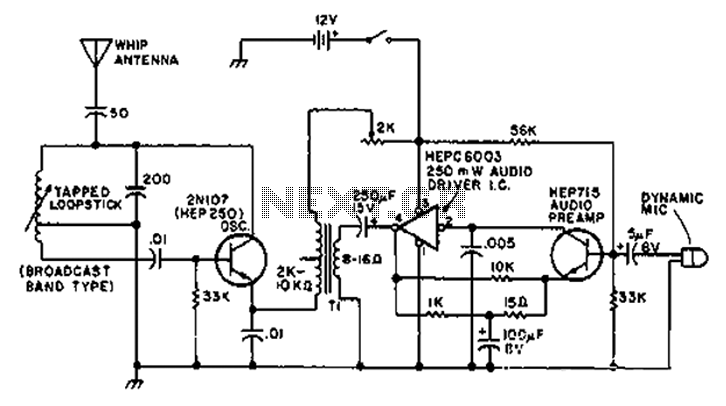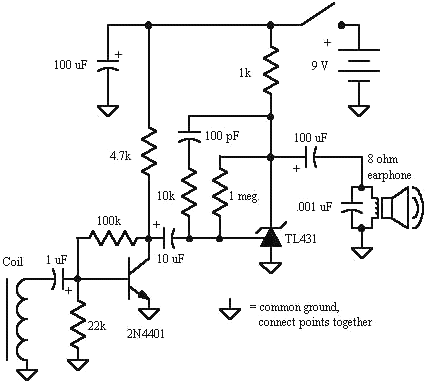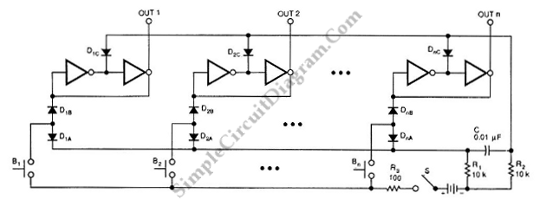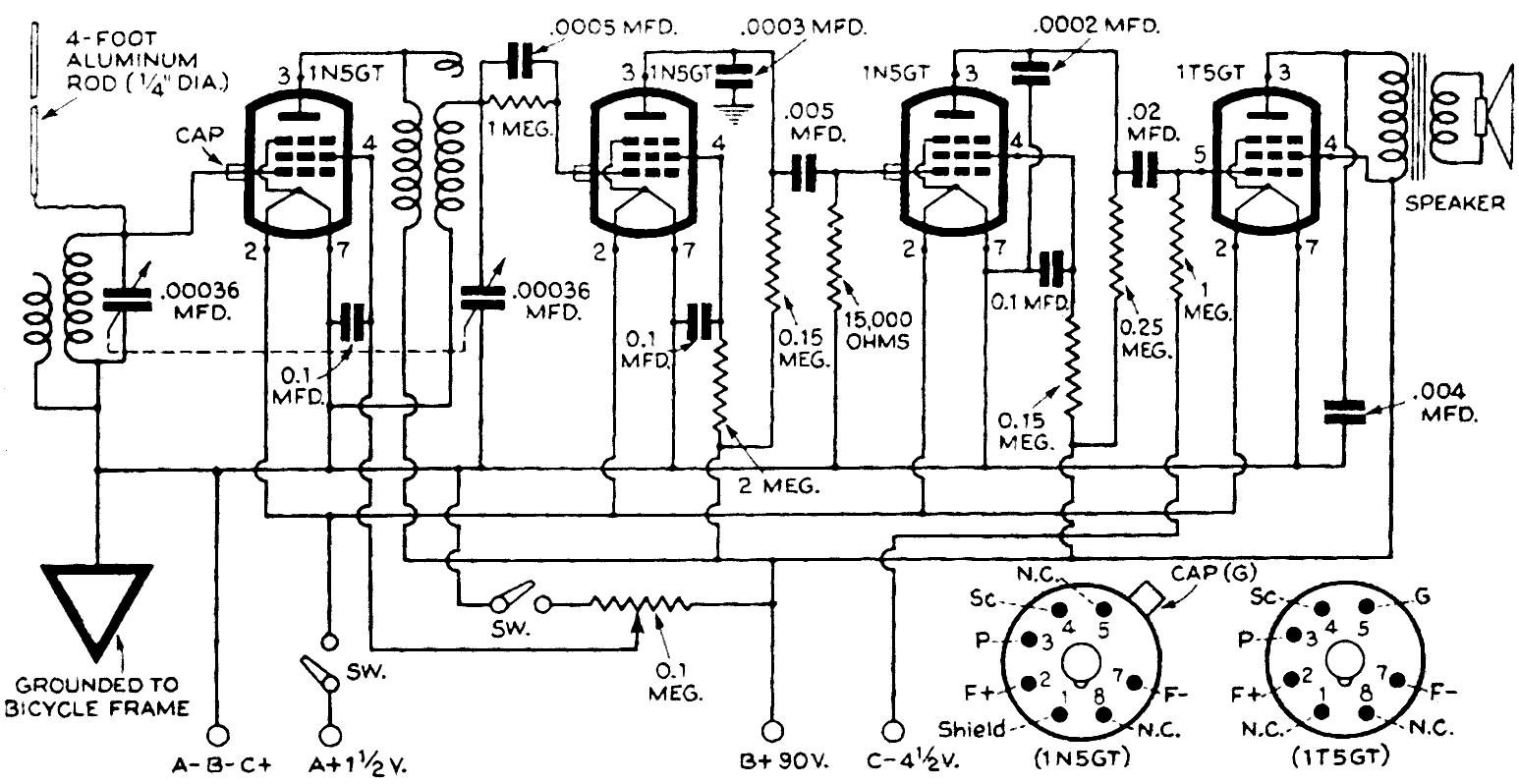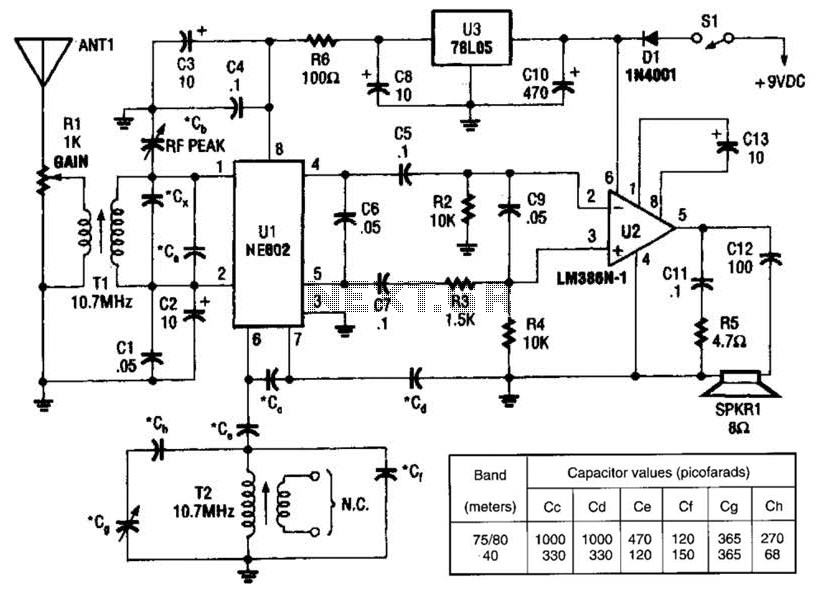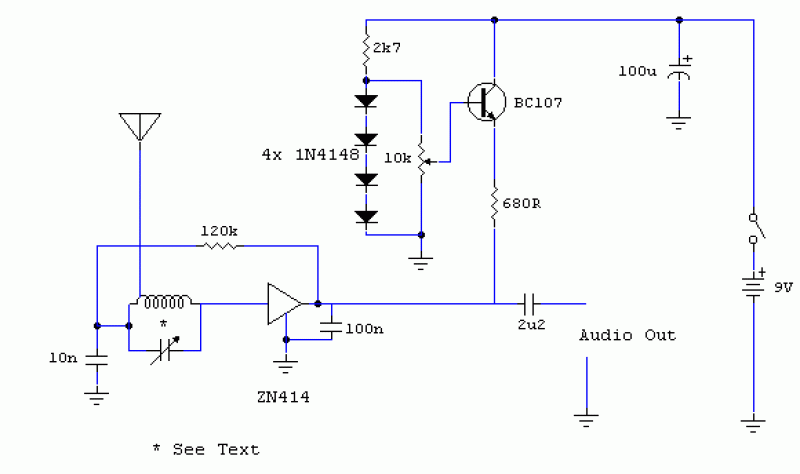
AM Radio Receiver

This is the circuit diagram of a mini AM radio receiver. All general-purpose transistors should work in this circuit; BC549 transistors can be used. The circuit utilizes a compact three-transistor regenerative receiver with fixed components.
The mini AM radio receiver circuit is designed to operate with a limited number of components while effectively receiving amplitude modulation (AM) signals. The core of the circuit consists of three transistors configured to function as a regenerative amplifier. This configuration enhances the sensitivity and selectivity of the receiver, allowing it to pick up distant AM broadcasts.
The first transistor serves as the input stage, where the antenna picks up the radio frequency signals. The BC549 transistor, being a general-purpose NPN transistor, is suitable for this application due to its favorable characteristics such as low noise and adequate gain. The input signal is coupled to the base of the first transistor through a capacitor, which blocks any DC component while allowing the AC signal to pass.
The second transistor acts as a regenerative amplifier. It is connected in such a way that a portion of the output signal is fed back to the input, which increases the gain of the circuit. This feedback is controlled by a variable resistor, allowing for tuning and adjustment of the amplification level to optimize the reception quality. The collector of this transistor is connected to a tuned circuit, which consists of an inductor and a variable capacitor. This tuned circuit is crucial for selecting the desired frequency and rejecting unwanted signals.
The final transistor serves as the output stage, driving the audio signal to a speaker or earphones. It amplifies the audio frequency signals extracted from the AM carrier wave. The output is typically coupled to the speaker through a transformer or capacitor to ensure proper impedance matching and to filter out any DC offset.
Overall, this mini AM radio receiver circuit exemplifies simplicity and efficiency, making it an excellent project for electronics enthusiasts interested in radio frequency applications. The use of BC549 transistors ensures accessibility and reliability in performance, while the regenerative design allows for improved reception capabilities in a compact form factor.This is the circuit diagram of mini AM Radio receiver. All general purpose transistors should work in this circuit, you can use BC549 transistors for this circuit. The circuit use a compact three transistor, regenerative receiver with fixed.. 🔗 External reference
The mini AM radio receiver circuit is designed to operate with a limited number of components while effectively receiving amplitude modulation (AM) signals. The core of the circuit consists of three transistors configured to function as a regenerative amplifier. This configuration enhances the sensitivity and selectivity of the receiver, allowing it to pick up distant AM broadcasts.
The first transistor serves as the input stage, where the antenna picks up the radio frequency signals. The BC549 transistor, being a general-purpose NPN transistor, is suitable for this application due to its favorable characteristics such as low noise and adequate gain. The input signal is coupled to the base of the first transistor through a capacitor, which blocks any DC component while allowing the AC signal to pass.
The second transistor acts as a regenerative amplifier. It is connected in such a way that a portion of the output signal is fed back to the input, which increases the gain of the circuit. This feedback is controlled by a variable resistor, allowing for tuning and adjustment of the amplification level to optimize the reception quality. The collector of this transistor is connected to a tuned circuit, which consists of an inductor and a variable capacitor. This tuned circuit is crucial for selecting the desired frequency and rejecting unwanted signals.
The final transistor serves as the output stage, driving the audio signal to a speaker or earphones. It amplifies the audio frequency signals extracted from the AM carrier wave. The output is typically coupled to the speaker through a transformer or capacitor to ensure proper impedance matching and to filter out any DC offset.
Overall, this mini AM radio receiver circuit exemplifies simplicity and efficiency, making it an excellent project for electronics enthusiasts interested in radio frequency applications. The use of BC549 transistors ensures accessibility and reliability in performance, while the regenerative design allows for improved reception capabilities in a compact form factor.This is the circuit diagram of mini AM Radio receiver. All general purpose transistors should work in this circuit, you can use BC549 transistors for this circuit. The circuit use a compact three transistor, regenerative receiver with fixed.. 🔗 External reference
